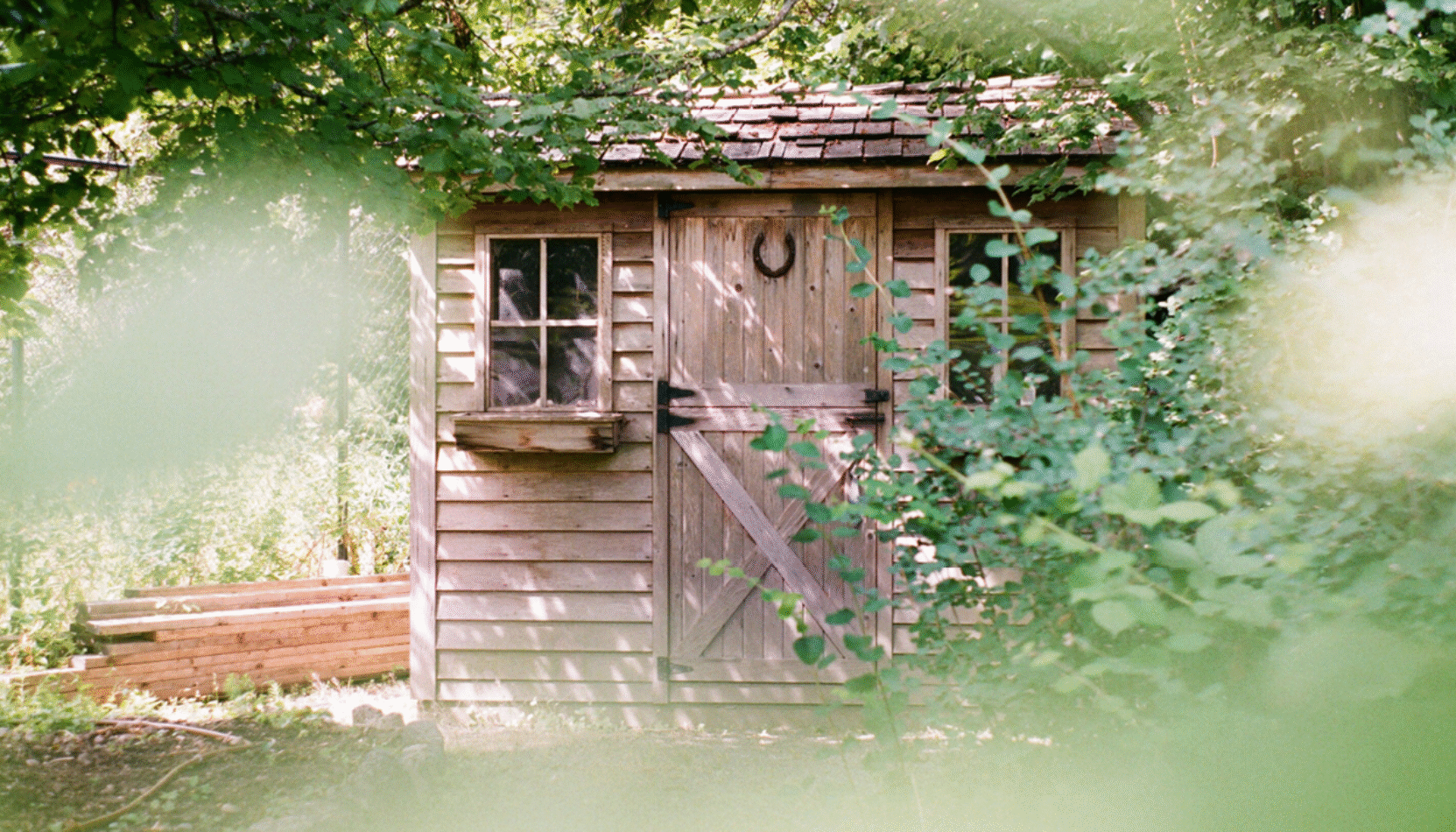DO YOU NEED PLANNING PERMISSION TO BULD A SHED?
A shed is one of the most practical additions you can make to your outside space. It provides handy storage for garden tools, furniture and more. So, it’s no surprise that around 1.5 million sheds are sold annually in the UK.
According to recent research, about 65% of British adults already own a shed. If you’re yet to get one, there’s a chance you’re considering taking the plunge this summer. But as it’s a permanent structure, you may be wondering whether you need planning permission to build a shed. To clear up this conundrum, property and construction expert Thomas Goodman at MyJobQuote.co.uk explains everything you need to know.
Do Sheds Need Planning Permission?
The short answer is no, you don’t usually need planning permission to build a shed. This is because they fall under Permitted Development Rights.
Under these rules, sheds, garages, greenhouses and similar outbuildings that are for domestic use or personal enjoyment, don’t need planning permission.
However, to be counted as a permitted development, your shed must comply with a number of conditions. Before you start installing your shed, it’s worth knowing what these are, so you can be sure that you don’t need planning permission.
To fall under permitted development, a shed should be:
- Located to the rear of your house, i.e. in your back garden or yard.
- No taller than 3m in height or no more than 4m in height if it has a dual-pitch roof.
- Built with eaves that are no higher than 2.5m.
- Single-storey.
- Under 2.5m in height if it’s within 2m of your garden’s boundary fence, hedge or wall.
Occasions When You Do Need Planning Permission for a Shed
There are occasions when you do need planning permission for a shed. This is usually down to the shed’s size, location or use. But local planning restrictions can also determine whether you need permission.
Size
If your shed’s bigger than Permitted Development rules allow – say you want to build a shed next to your garden fence and it’s over 2.5m tall – then you’ll need to seek planning permission. But you’ll also need planning permission if erecting a shed means that more than 50% of your outside space has been built on with extensions and outbuildings.
Location
If you want to place a shed in your front garden, then you’ll need planning permission. You may also need it to put a shed at the side of your house. This is certainly true if you live on designated land. Designated land means a location that falls within a National Park, Area of Outstanding Natural Beauty (AONB), conservation area or World Heritage Site.
Local Planning Restrictions
Homes on designated land are subject to more restrictions than homes in other areas. This is to ensure that these places retain their natural beauty, traditional character or historical value. So, your local authority might be pickier about the size and location of your shed as well as what it’s built from.
Permitted Development Rights don’t apply to flats and maisonettes. So, if you have a garden flat, it’s best to contact your local authority first as it’s likely to need permission.
Use
It also matters what you plan to use your shed for. If it’s to house a home office or is for some other business use, such as a garden nursery enterprise or commercial kennels, you’ll need planning permission. The same is true if you’re planning to create a self-contained cabin rather than a standard shed.
Does it Matter How the Shed is Constructed?
Most sheds are made from timber, metal or plastic. But if you want something stronger and more durable, you might be thinking about having a brick shed built. The good news is that this won’t directly affect whether you need planning permission.
That said, the way you design and construct your shed does matter. Should you add a second floor, balcony or veranda, then it will need planning permission.
Are Planning Rules the Same Everywhere?
You might think that planning rules are the same across the whole of the UK. Unfortunately, there are slight variations to these rules in Wales, Scotland and Northern Ireland. To complicate things further, the rules are tighter in conservation areas, National Parks and other protected areas.
What if You’re Still Unsure Whether You Need Planning Permission?
As the rules aren’t the same everywhere, you might be a little unsure as to whether you need planning permission for your shed. So, what should you do if you are unclear on which rules apply to you?
The best thing to do is to contact your local planning department. You should be able to find their contact details on your local authority’s website. It’s essential to do this before you start any work on constructing a shed.
Are There Other Permissions You Might Need?
There are other permissions that you might need before you can build a shed. So, it’s always worth checking.
If you live in a listed building, you’ll need to gain Listed Building Consent before you can put up a shed. If your home is leasehold rather than freehold, you’ll need to gain permission from the freeholder first. This can also be the case for homes built on private estates.
Final Thoughts
So, there we have it. For the majority of people, a shed can be built under Permitted Development Rights. But where it falls outside of these rules, you should seek planning permission.
Now we’ve covered all you need to know about whether you need planning permission for a shed, you should be all set to prepare your garden for summer.
ABOUT THE AUTHOR… THOMAS GOODMAN
Thomas Goodman has worked as a property and construction expert for MyJobQuote for six years and has worked in the construction industry for over twenty years. Thomas continues to work on building projects while providing expert construction and property advice to industry professionals and DIY enthusiasts.














